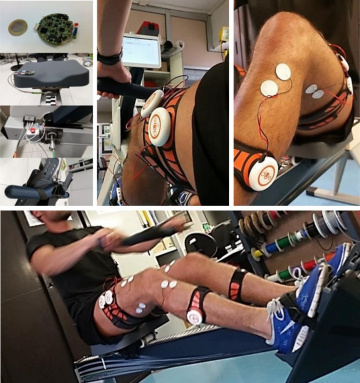Promoting whole-body exercise in paraplegia
Cardiovascular impairments, although being one of the most severe consequences of spinal cord injury, might be attenuated by combining voluntary contraction with Functional Electrical Stimulation. FES systems commercially available impose unnatural segmental coordination, are expensive and have been exclusively used within clinical facilities and under clinical supervision. Conciliating FES with indoor rowing (FES-Rowing) has emerged as an economically and self-sustainable alternative. Issues on the stimulation timing and on the key muscles most likely to improve heart conditioning and to produce smooth rowing gestures in paraplegics remain open. Our attention is therefore devoted to the development of a new FES-Rowing protocols, with the ultimate goal of improving physical conditioning of paraplegic persons and of reproducing the muscle coordination seen in elite athletes.

Relevant publications:
Vieira T., Cerone G.L., Gastaldi L., Pastorelli S., Oliveira L.F., Gazzoni M., Botter A. Design and Test of a Biomechanical Model for the Estimation of Knee Joint Angle During Indoor Rowing: Implications for FES-Rowing Protocols in Paraplegia, IEEE Trans Neural Syst Rehabil Eng, vol. 26, pp. 2145-2152, 2018. hdl:11583/2715448
Vieira T., Botter A., Gastaldi L., Sacco I.C.N., Martelli F., Giacomozzi C. Textured insoles affect the plantar pressure distribution while elite rowers perform on an indoor rowing machine, PLoS One, vol. 12, pp.e0187202, 2017. hdl:11583/2692802
Vieira T.M., Potenza P., Gastaldi L., Botter A. Electrode position markedly affects knee torque in tetanic, stimulated contractions. Eur J Appl Physiol, vol. 116, pp. 335-42, 2016. hdl:11583/2629861
Readi N.G., Rosso V., Rainoldi A., Vieira T.M. Do sweep rowers symmetrically activate their low back muscles during indoor rowing? Scand J Med Sci Sports, vol. 25, pp. 339-52, 2015. hdl:11583/2565961
